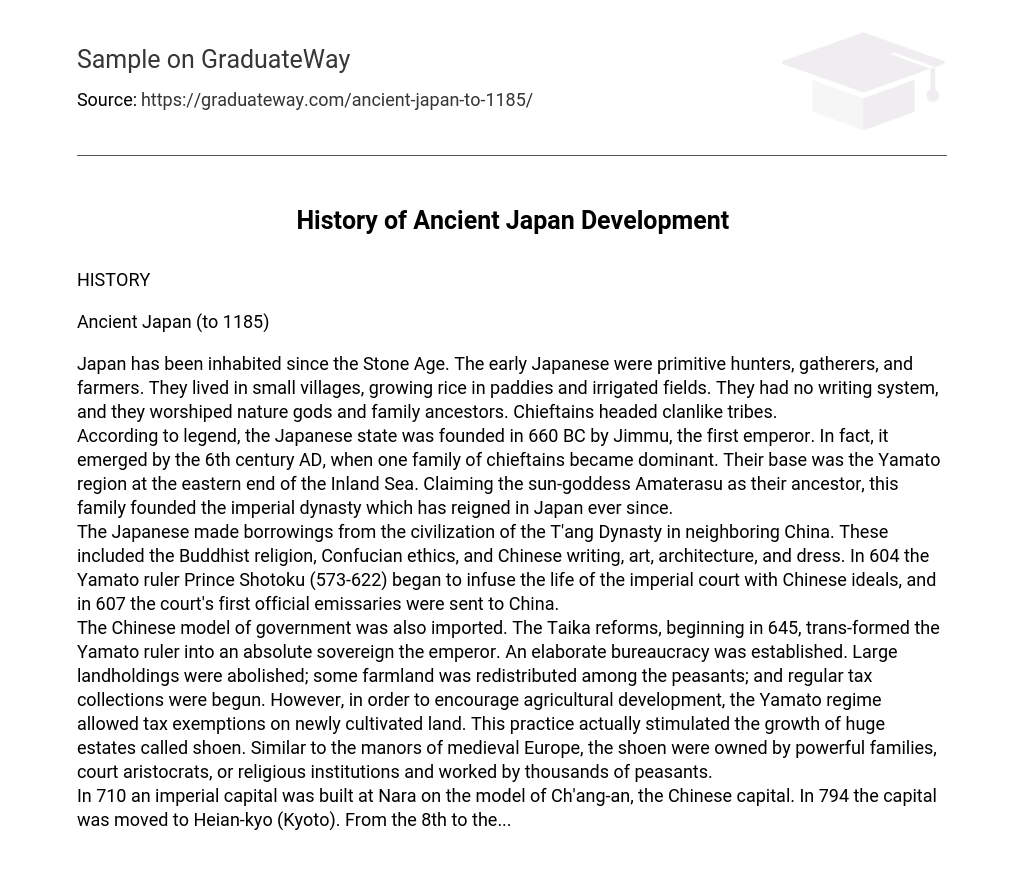HISTORY
Ancient Japan (to 1185)
Japan has been inhabited since the Stone Age. The early Japanese were primitive hunters, gatherers, and farmers. They lived in small villages, growing rice in paddies and irrigated fields. They had no writing system, and they worshiped nature gods and family ancestors. Chieftains headed clanlike tribes.
According to legend, the Japanese state was founded in 660 BC by Jimmu, the first emperor. In fact, it emerged by the 6th century AD, when one family of chieftains became dominant. Their base was the Yamato region at the eastern end of the Inland Sea. Claiming the sun-goddess Amaterasu as their ancestor, this family founded the imperial dynasty which has reigned in Japan ever since.
The Japanese made borrowings from the civilization of the T’ang Dynasty in neighboring China. These included the Buddhist religion, Confucian ethics, and Chinese writing, art, architecture, and dress. In 604 the Yamato ruler Prince Shotoku (573-622) began to infuse the life of the imperial court with Chinese ideals, and in 607 the court’s first official emissaries were sent to China.
The Chinese model of government was also imported. The Taika reforms, beginning in 645, trans-formed the Yamato ruler into an absolute sovereign the emperor. An elaborate bureaucracy was established. Large landholdings were abolished; some farmland was redistributed among the peasants; and regular tax collections were begun. However, in order to encourage agricultural development, the Yamato regime allowed tax exemptions on newly cultivated land. This practice actually stimulated the growth of huge estates called shoen. Similar to the manors of medieval Europe, the shoen were owned by powerful families, court aristocrats, or religious institutions and worked by thousands of peasants.
In 710 an imperial capital was built at Nara on the model of Ch’ang-an, the Chinese capital. In 794 the capital was moved to Heian-kyo (Kyoto). From the 8th to the…





